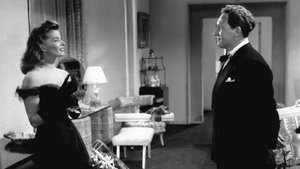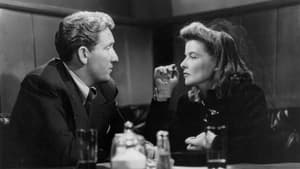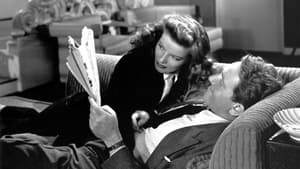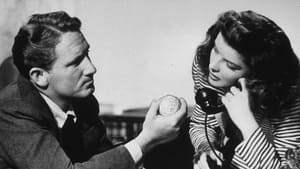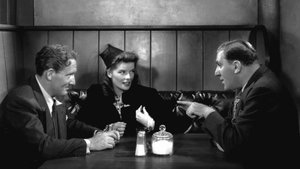Contact: info@alwanfilm.com
Video Sources 0 Views
- Watch trailer
- Woman of the Year 1942 Colorized

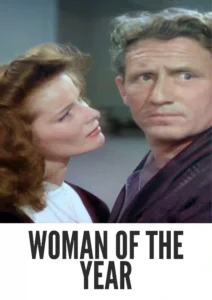
Synopsis
Table of Contents
ToggleReview: Woman of the Year 1942 Colorized – A Classic Romantic Comedy

Introduction
In the annals of classic Hollywood cinema, few films are as celebrated as “Woman of the Year” (1942). Directed by George Stevens and starring the dynamic duo Katharine Hepburn and Spencer Tracy, this romantic comedy-drama stands as a testament to the golden age of cinema. Not only did it mark the beginning of a legendary screen partnership between Hepburn and Tracy, but it also offered sharp social commentary wrapped in a delightful narrative. In this article, we will explore the enduring charm of “Woman of the Year,” its performances, critical reception, and its significant place in film history.
Check The Full Colorized Movies List
Check Our Colorized Movies Trailer Channel
Understanding Woman of the Year 1942 Colorized: Director, Cast, and Genre
“Woman of the Year” is a quintessential romantic comedy-drama directed by George Stevens, a filmmaker known for his versatility and craftsmanship. Stevens, who later directed classics like “A Place in the Sun” and “Giant,” brought his nuanced directorial vision to this film, blending humor, drama, and romance seamlessly.
The cast is led by Katharine Hepburn and Spencer Tracy, whose on-screen chemistry is legendary. Hepburn, playing the sophisticated, career-driven Tess Harding, delivers a performance that is both sharp and endearing. Tracy, as the sportswriter Sam Craig, complements Hepburn perfectly with his grounded, everyman charm. Together, they create a dynamic that is both compelling and heartwarming.
The genre of “Woman of the Year” falls squarely into the romantic comedy-drama category. It deftly balances comedic elements with more serious themes of gender roles, career ambitions, and personal relationships. This blend makes it a timeless classic that continues to resonate with audiences.
Exploring the World of Woman of the Year 1942 Colorized: Plot and Characters
“Woman of the Year” centers around the relationship between Tess Harding (Katharine Hepburn), a renowned political columnist, and Sam Craig (Spencer Tracy), a sportswriter for the same newspaper. Their initial clash of personalities and professional outlooks sets the stage for a witty and engaging romantic narrative.
The story begins with Tess and Sam meeting at the newspaper where they both work. Tess is a sophisticated, well-educated woman who speaks multiple languages and is deeply involved in international affairs. Sam, on the other hand, is a straightforward, down-to-earth sportswriter who values simplicity and practicality.
Despite their differences, Tess and Sam are drawn to each other, leading to a whirlwind romance and a swift marriage. However, their differing lifestyles and priorities soon create tension. Tess’s demanding career and her view of marriage as a secondary priority clash with Sam’s desire for a more traditional, domestic partnership.
The film explores their journey as they navigate these challenges, highlighting the compromises and adjustments required in any relationship. Key moments include Tess’s attempts to engage with Sam’s world of sports, Sam’s frustration with Tess’s high-profile social engagements, and their eventual realization that mutual respect and understanding are essential for their marriage to work.
The Art of Film Colorization
While “Woman of the Year” was originally shot in black and white, the concept of film colorization—adding color to black and white films—has been a topic of debate in the film community. This process involves digitally adding color to the original footage, offering a new way for audiences to experience classic films.
Proponents argue that colorization can make older films more accessible and appealing to modern audiences, enhancing the visual experience. However, critics contend that it can compromise the director’s original artistic vision and alter the film’s historical authenticity.
Early Colored Films: A Brief History
The journey of early colored films began with hand-painted frames and evolved through various techniques, such as tinting, toning, and Technicolor. Early experiments with color were often labor-intensive and costly, but they paved the way for the vibrant, full-color films we enjoy today.
Technicolor, introduced in the 1920s, became the gold standard for color films by the 1930s, providing rich, saturated hues that brought stories to life in a new dimension. While “Woman of the Year” was not originally made in color, the advent of colorization technology allows for reimagining its visual narrative for contemporary audiences.
Woman of the Year 1942 and Its Early Colored Version
The idea of releasing “Woman of the Year” in a colorized format is intriguing, offering fans and new viewers a chance to experience the film in a fresh light. Colorization could bring a new vibrancy to the film’s visual storytelling, highlighting details in costumes, sets, and cinematography that may go unnoticed in black and white.
However, the decision to colorize must be approached with care, respecting the original tone and aesthetic choices made by George Stevens. Colorization can enhance the visual appeal but must be balanced with preserving the film’s historical and artistic integrity.
The Debate Over Film Colorization
The debate over film colorization centers on the tension between preserving the original artistic intent and making classic films more accessible to modern audiences. Purists argue that colorizing black and white films can distort the director’s vision, changing the film’s mood and impact. On the other hand, advocates see it as a way to revitalize old films, attracting a broader audience.
In the case of “Woman of the Year,” colorization could offer a new perspective on the film, potentially enhancing its appeal to younger viewers who may be less inclined to watch black and white movies. However, it also raises questions about how much alteration is acceptable without compromising the film’s essence.
Examining Woman of the Year 1942 as an Early Colored Film
Viewing “Woman of the Year” as an early colored film could provide a unique insight into its narrative and stylistic choices. Color can enhance the film’s visual storytelling, bringing out the contrast between Tess’s sophisticated world and Sam’s more grounded, earthy environment.
For instance, Tess’s elegant wardrobe and the upscale settings she frequents could be accentuated with vibrant colors, emphasizing her character’s sophistication and worldly nature. Similarly, the more muted tones of Sam’s world could highlight his practicality and down-to-earth personality.
However, the challenge lies in ensuring that the colorization process respects the film’s original tone and mood. The goal should be to enhance the viewing experience without overshadowing the film’s inherent charm and historical significance.
Influence and Legacy: Woman of the Year 1942 Colorized’s Impact on Cinema
“Woman of the Year” has left an indelible mark on cinema, influencing both the romantic comedy genre and the portrayal of strong female characters in film. Katharine Hepburn’s performance as Tess Harding set a new standard for female leads, combining intelligence, independence, and vulnerability in a way that resonated with audiences.
The film also marked the beginning of the iconic partnership between Hepburn and Tracy, whose on-screen chemistry became legendary. Their dynamic set a template for romantic pairings in cinema, blending wit, charm, and emotional depth.
Furthermore, “Woman of the Year” tackled issues of gender roles and career ambitions at a time when such topics were not commonly explored in mainstream cinema. Its portrayal of a successful, independent woman balancing career and personal life remains relevant, reflecting ongoing societal debates about gender equality and work-life balance.
Director’s Cinematic Legacy: Beyond Woman of the Year 1942 Colorized
George Stevens’ directorial legacy extends far beyond “Woman of the Year,” encompassing a diverse array of films that have left a lasting impact on cinema. Known for his versatility and attention to detail, Stevens’ body of work spans various genres, from romantic comedies to epic dramas.
Films like “A Place in the Sun,” “Shane,” and “Giant” showcase Stevens’ ability to craft compelling narratives with rich character development and stunning visual compositions. His work often explores complex themes of love, identity, and social change, reflecting his deep understanding of human nature and society.
Stevens’ influence can be seen in the works of contemporary filmmakers who strive to blend visual storytelling with emotional depth. His commitment to cinematic excellence continues to inspire directors and audiences alike, cementing his place as one of Hollywood’s most revered auteurs.
Themes Explored in Woman of the Year 1942 Colorized
“Woman of the Year” delves into themes of gender roles, career ambitions, and the dynamics of personal relationships. Tess Harding’s character embodies the challenges faced by professional women striving for success in a male-dominated world. Her journey highlights the tension between personal fulfillment and societal expectations, a theme that remains relevant today.
The film also explores the concept of compromise and mutual respect in relationships. Tess and Sam’s differing worldviews and priorities create conflict, but their eventual reconciliation underscores the importance of understanding and respecting each other’s perspectives. This theme of balance and compromise is central to the film’s enduring appeal.
Additionally, “Woman of the Year” addresses the role of media and public perception, with Tess and Sam both working in the newspaper industry. Their professional rivalry and collaboration provide a backdrop for exploring how media shapes and reflects societal values.
Reception and Controversy Surrounding Woman of the Year 1942 Colorized
Upon its release, “Woman of the Year” received critical acclaim for its sharp writing, stellar performances, and engaging narrative. Critics praised Hepburn and Tracy’s chemistry, as well as the film’s witty dialogue and insightful social commentary.
The film’s success at the box office and its subsequent recognition at the Academy Awards—winning the Oscar for Best Original Screenplay—cemented its status as a classic. However, it also sparked discussions about gender roles and the portrayal of career women in cinema, highlighting the evolving attitudes of the era.
In the context of colorization, the debate continues. Some purists argue that colorizing “Woman of the Year” would compromise its historical authenticity and diminish its classic charm. Others believe that a colorized version could attract new audiences and offer a fresh perspective on the film’s visual storytelling.
Where to Watch Woman of the Year 1942 Colorized Online
For those eager to experience the timeless brilliance of “Woman of the Year,” the film is available on various streaming platforms. Classic film enthusiasts can find it on services like Amazon Prime Video, Google Play, and Apple iTunes. Whether in its original black and white format or a potential colorized version, “Woman of the Year” remains a must-watch for lovers of classic cinema.
FAQs About Woman of the Year 1942 Colorized
Q: Is “Woman of the Year” historically significant?
A: Yes, “Woman of the Year” is considered a landmark film for its portrayal of strong female characters and its exploration of gender roles and career ambitions. It also marked the beginning of the iconic partnership between Katharine Hepburn and Spencer Tracy.
Q: Who wrote the screenplay for “Woman of the Year”?
A: The screenplay for “Woman of the Year” was written by Ring Lardner Jr. and Michael Kanin, who won the Academy Award for Best Original Screenplay for their work on the film.
Q: What makes Hepburn and Tracy’s chemistry so special?
A: Hepburn and Tracy’s on-screen chemistry is legendary due to their natural rapport, contrasting yet complementary acting styles, and mutual respect. Their dynamic adds depth and authenticity to their characters’ relationship.
Q: How does “Woman of the Year” address gender roles?
A: The film addresses gender roles by highlighting the challenges faced by Tess Harding, a successful career woman, in balancing her professional and personal life. It explores the tension between societal expectations and personal fulfillment, offering a progressive perspective for its time.
Q: Is “Woman of the Year” available in color?
A: As of now, “Woman of the Year” is primarily available in its original black and white format. However, the potential for a colorized version exists, which could offer a new way to experience the film.
Conclusion
“Woman of the Year” (1942) remains a timeless classic that continues to captivate audiences with its sharp wit, engaging narrative, and stellar performances. The film’s exploration of gender roles, career ambitions, and personal relationships resonates as deeply today as it did upon its release.
While the idea of a colorized version presents intriguing possibilities, the true power of “Woman of the Year” lies in its storytelling, character dynamics, and the undeniable chemistry between Katharine Hepburn and Spencer Tracy. As we reflect on this cinematic gem, let us appreciate its enduring legacy and the timeless themes it so eloquently explores. Whether viewed in black and white or in color, “Woman of the Year” remains a shining example of classic Hollywood at its finest.
